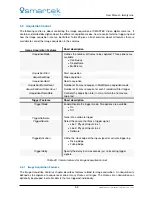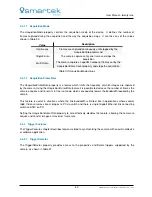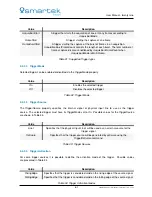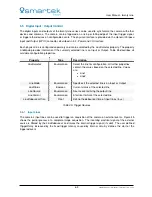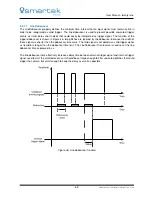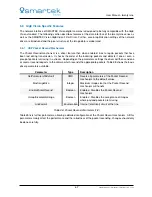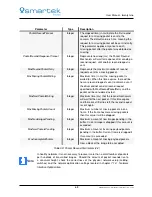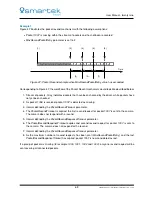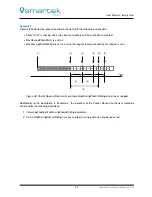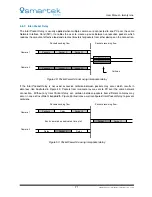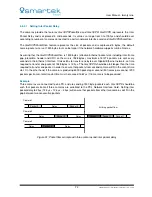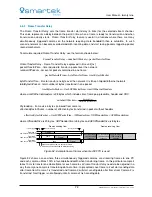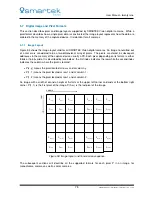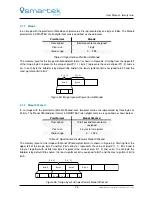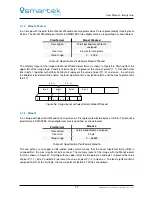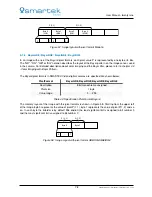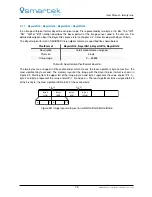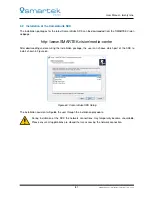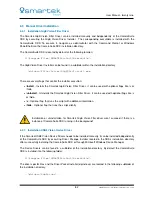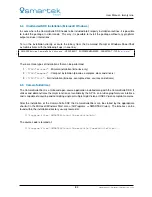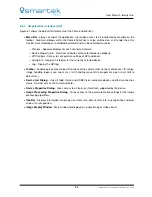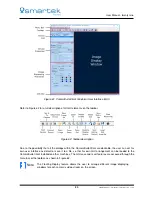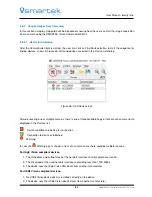
User Manual - twentynine
5.6.2.1
Setting Inter Packet Delay
The cameras provide the features
GevSCPSPacketSize
and
GevSCPD
.
GevSCPD
represents the Inter
Packet Delay and is expressed in microseconds. Its value can range from 0 to 1000
µ
s and should be set
according to number of cameras connected to a certain network interface card and
GevSCPSPacketSize
.
The
GevSCPSPacketSize
feature represents the size of packets and is expressed in bytes, the default
camera packet size is at 1500 bytes, but can be larger if the network hardware supports Jumbo Frames.
Assuming that the
GevSCPSPacketSize
is 1500 bytes (effective Ethernet packet size including inter-frame
gap, preamble, header and CRC on the wire is 1538 bytes), maximum of 81274 packets are sent every
second via the Ethernet interface. It takes 8ns to transfer one byte over Gigabit Ethernet network, so time
required to transfer one packet of 1538 bytes is 12,3
µ
s. The
GevSCPD
should be a bit longer than the time
required to transfer one packet, in order to ensure that packets from second camera will fit in the vacant time
slot. On the other hand, if the camera is producing 60000 packets per second (50 frames per second, 1200
packets per frame), total transfer time must not exceed 16,67
µ
s if frame rate is to be preserved.
Example
Three cameras are connected to one PC, and are sending 1500 byte packets each.
GevSCPD
should be
such that packets from all three cameras are serialized to the PC’s Network Interface Card. Setting inter
packet delay to 25
µ
s (12,3
µ
s + 12,3
µ
s
≈
25
µ
s) will ensure that packets from other two cameras will fit in the
gap between two consecutive packets.
Delay
Packet 2
Delay
Packet 2
Delay
Packet 1
Packet 1
Camera 1
Camera 2
Packet 2
Delay
Camera 3
Packet 3
Delay
Packet 1
Arriving packet flow
Figure 51: Packet flow example with three cameras and inter packet delay
72
SMARTEK Vision | User Manual - twentynine | Doc. v1.0.2


